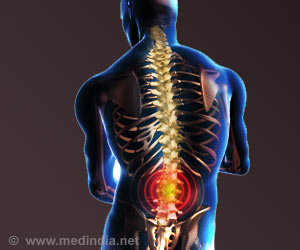‘Aging-related disc degeneration may be reduced by drug cocktails that pave the way to ease back pain by removing the aging cells and reduces the disc degeneration.
’
Discs are cushion-type support between the bony structures of the backbone – vertebrae. As a result of aging, these discs undergo degenerative changes that limit the regenerative capacity of the discs. This ultimately contributes to back pain especially low back pain.
Treatments for chronic back pain are only a few to minimize the symptoms to an only mild extent. The study team thereby explored the novel and non-invasive approach to preventing age-related disc degeneration through the effects of the drug cocktail.
The advantage of the method is that it did not involve painkillers like opioids and rather utilized a class of small molecules known as senolytics. These drugs target cells in the body that are in a process of age-related deterioration called senescence.
Generally, the body accumulates senescent cells with aging that secrete destructive enzymes and inflammatory proteins and in turn affect nearby healthy cells. Senolytic drugs remove these deteriorating cells, leaving room for new cells to replace them.
The Cocktail Drugs
The concept drives the notion that senescent cells are thus removed from a tissue that will further improve the tissue’s function. The study team thereby administered a cocktail of the senolytic drugs, dasatinib and quercetin, every week to the young, middle-aged, and elderly mice.
It was found that two drugs were capable of removing such aging cells that further reduced the disc degeneration in mice models. Moreover the weekly injections in younger animals had more benefit and protective effects.
“We anticipated that in tissues with a lot of senescence (aged mice), removing the senescent cells would make a big difference, but it didn’t. The therapy was most effective when we started treating the mice when those senescent cells were just beginning to emerge. Our findings show that if given early, senolytic drugs can actually slow disc degeneration. This is a novel preventive approach. This research paves the way for translating these studies first to a preclinical animal model and then to a clinical trial in humans,” says Makarand Risbud, Ph.D. at the Thomas Jefferson University.
Source: Medindia



